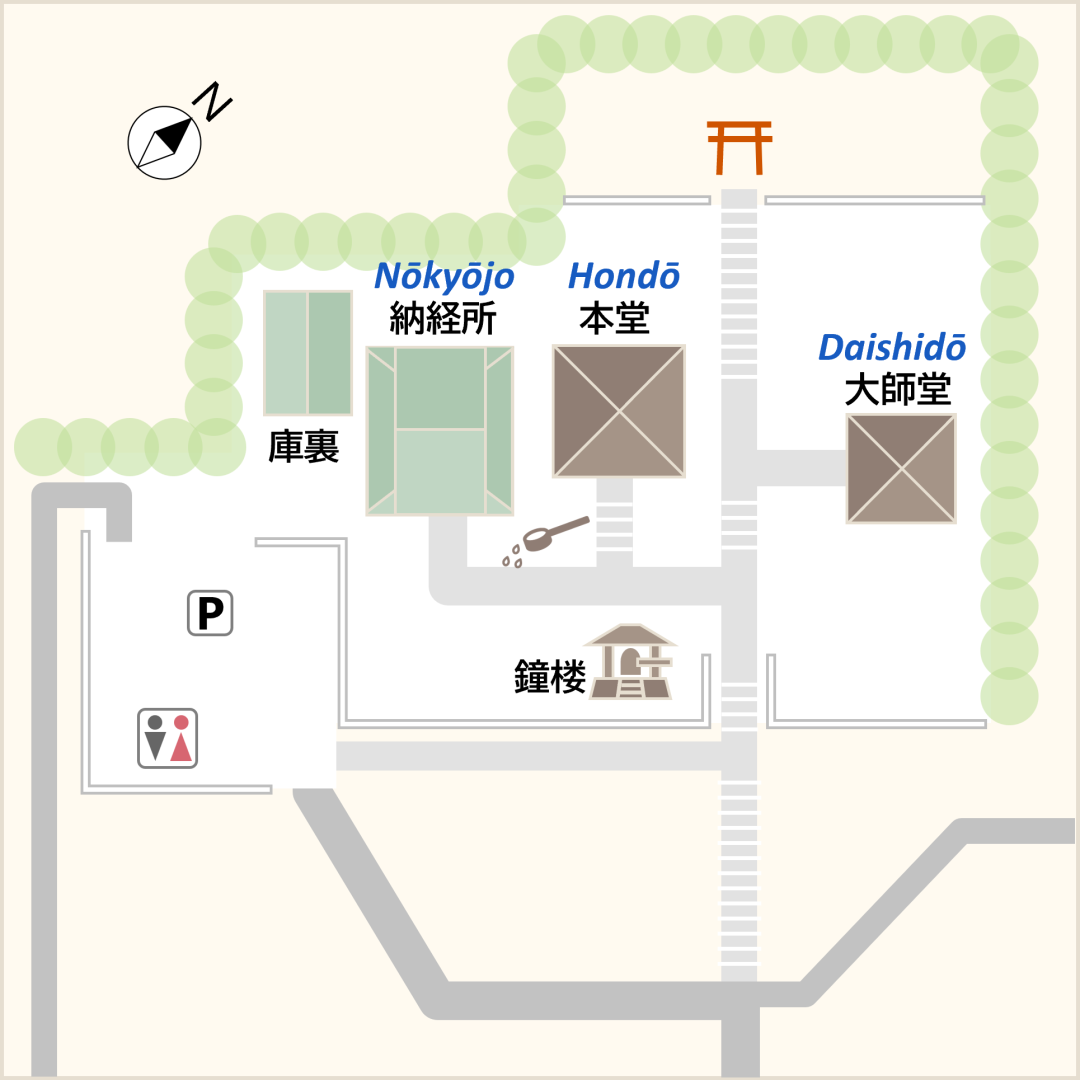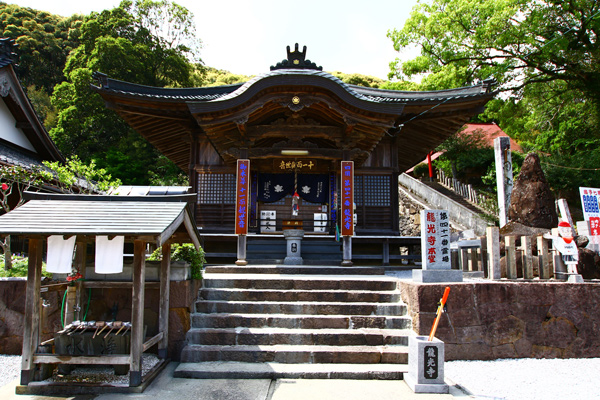The Shikoku Pilgrimage Temple Guide
Temple 41, Ryūkōji

Precinct map

History of the temple
Uwajima is the castle town of the Date family. Ten kilometers northeast of the city center is the Mima Plain. Ryūkōji is located on a hill overlooking the plain and is popularly known as Mima-no-Oinari-san. The temple is a sacred site that strongly conveys the atmosphere of the Shinto-Buddhist syncretism of the past. You can see that by the fact that the temple gate is a torii gate, a gate normally only used for a Shinto shrine. After passing through the gate, visitors are greeted by guardian komainu (guardian dogs) in place of the usual Ni-o statues, another feature typical of shrines. In the precincts of the temple, stone statues of a fox (Shinto) and a Jizo (Earth Treasury -- Buddhist) stand side by side in harmony.
According to legend, when Kobo Daishi visited this place in 807, a white-haired old man with a bundle of rice on his back appeared and said, "I live here to protect the Dharma teachings and benefit all people." Then he disappeared. Kobo Daishi realized that the old man was probably an incarnation of Gokoku Daimyojin and carved a statue of the deity Inari Myojin. He built a temple and enshrined the statue. He also carved and enshrined a statue of Juichimen Kannon Bosatsu (Eleven-faced Bodhisattva Who Hears the Sounds of the World) as the principal image and Fudo Myōō and Bishamonten on the sides. He named the temple, Inarizan Ryūkōji, and designated it the chief temple of the Shikoku Pilgrimage.
Since its foundation, Ryūkōji has been a temple of the syncretism of Shinto and Buddhism, and has been worshipped as a temple of Inari. However, the old Hondo was renamed Inari-sha (Shrine of Inari) due to the abolition of Buddhism by the Meiji government. A new Hondo was built and Juichimen Kannon Bosatsu was enshrined as the principal image. A statue of Inari Myojin is enshrined next to it.
The Mima Plain is beautiful with seasonal flowers. A cosmos festival is held in November every year.
Highlights
Hondo
The Hondo was built during the Meiji era (1868-1912). The principal image of Juichimen Kannon Bosatsu, which used to be principal image of the Inari Daimyojin, is enshrined in the Hondo as the main image, along with a statue of the Inari Daimyojin.
Daishido
The Daishido was built at the same time as the Hondo.

Details
Names: Inarizan, Gokokuin, Ryūkōji
Denomination: Shingon sect, Omuro school
Principal Image: Juichimen Kannon Bosatsu
Founder: Kobo Daishi
Founded: 807
Access
Address: 173, Togari, Mima-cho, Uwajima City, Ehime 798-1115
Phone: 0895-58-2186
Parking: Available
Lodging: None
Official website: None
